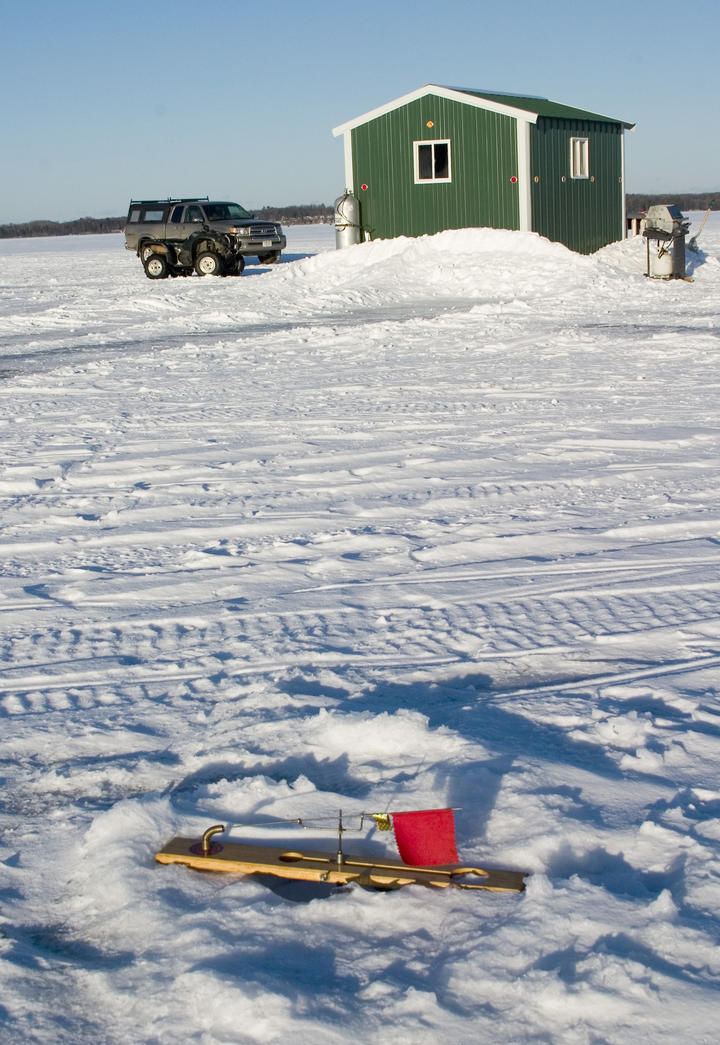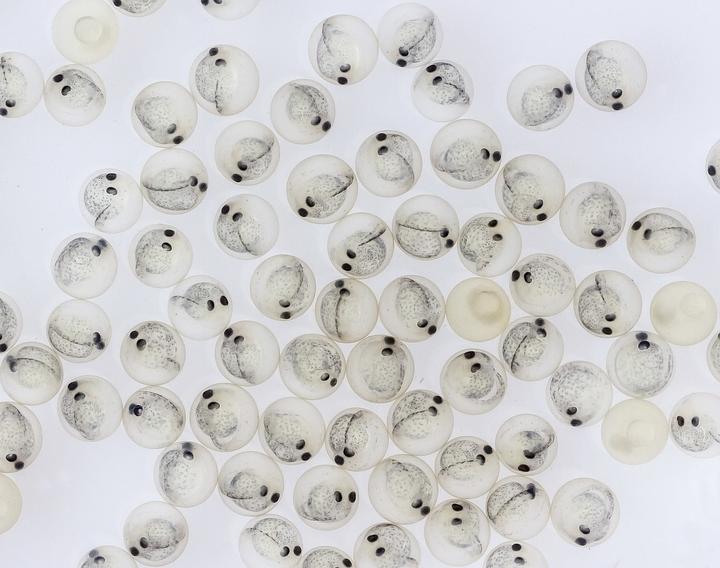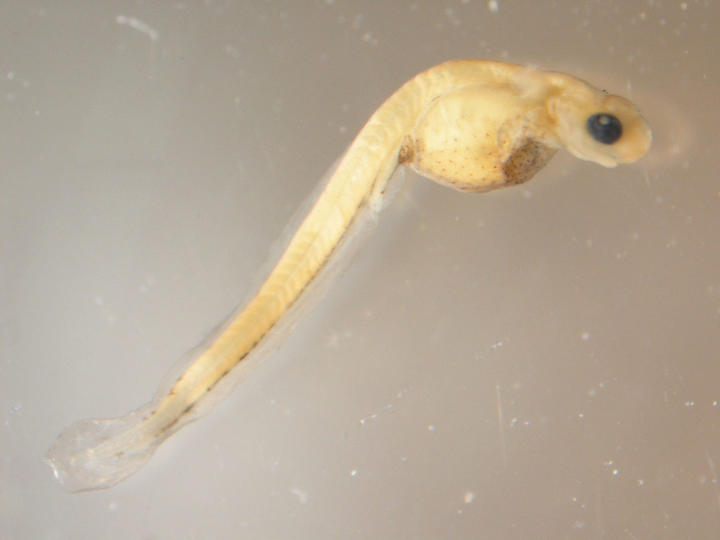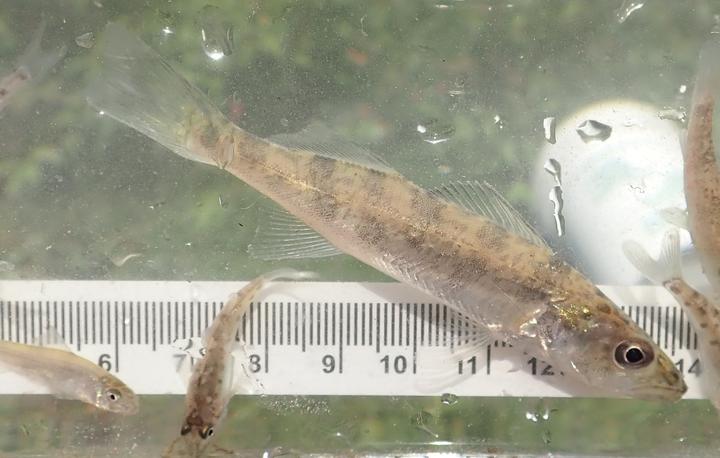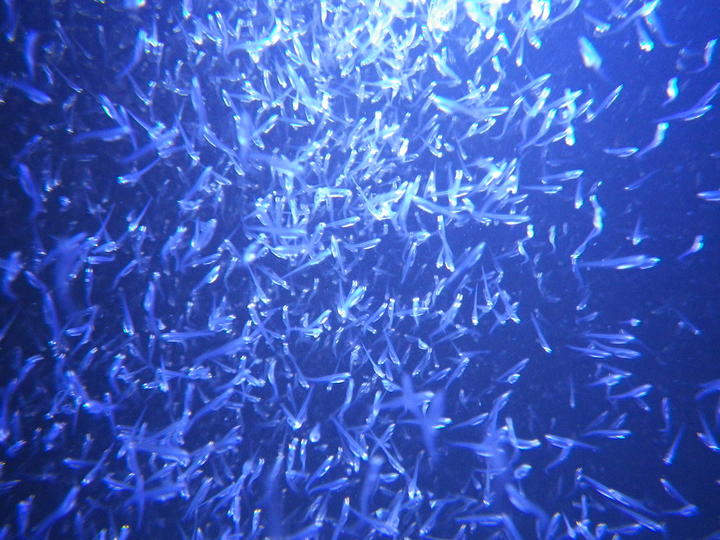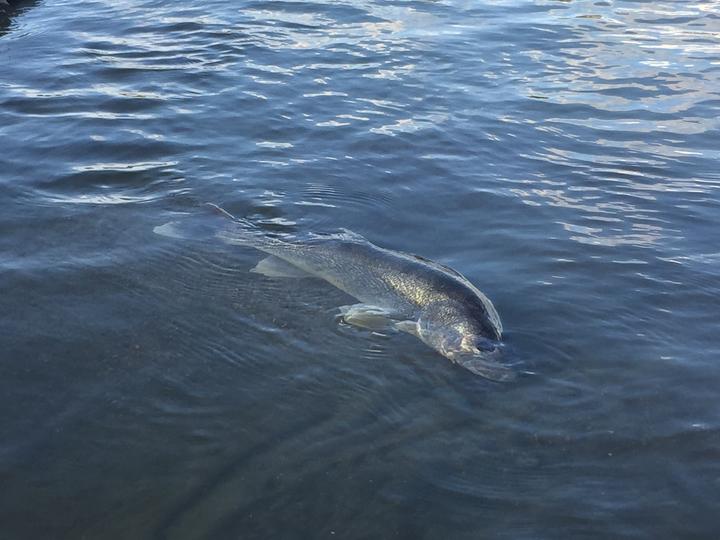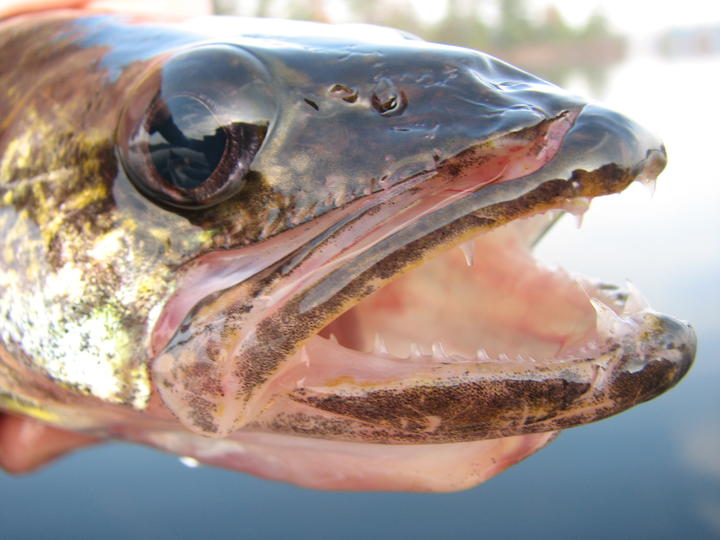More names for this animal
Anishinaabemowin: Ogaa
Dakota: Howaḳaŋ (fish)
The Dakota and Anishinaabe were among the earliest people to name Minnesota’s plants and animals, as well as to understand them in relation to Minnesota’s climate and seasons. Those original names are still in use, and several are included on the Season Watch website.
Latin (or scientific name): Sander vitreus
The scientific community has a convention of assigning agreed-upon Latin names to every kind of organism. Using scientific names helps people communicate confidently about the same organism and organize lifeforms based on how closely related they are.
More common names: Susquehanna salmon, yellow pike, pickerel
Page contents
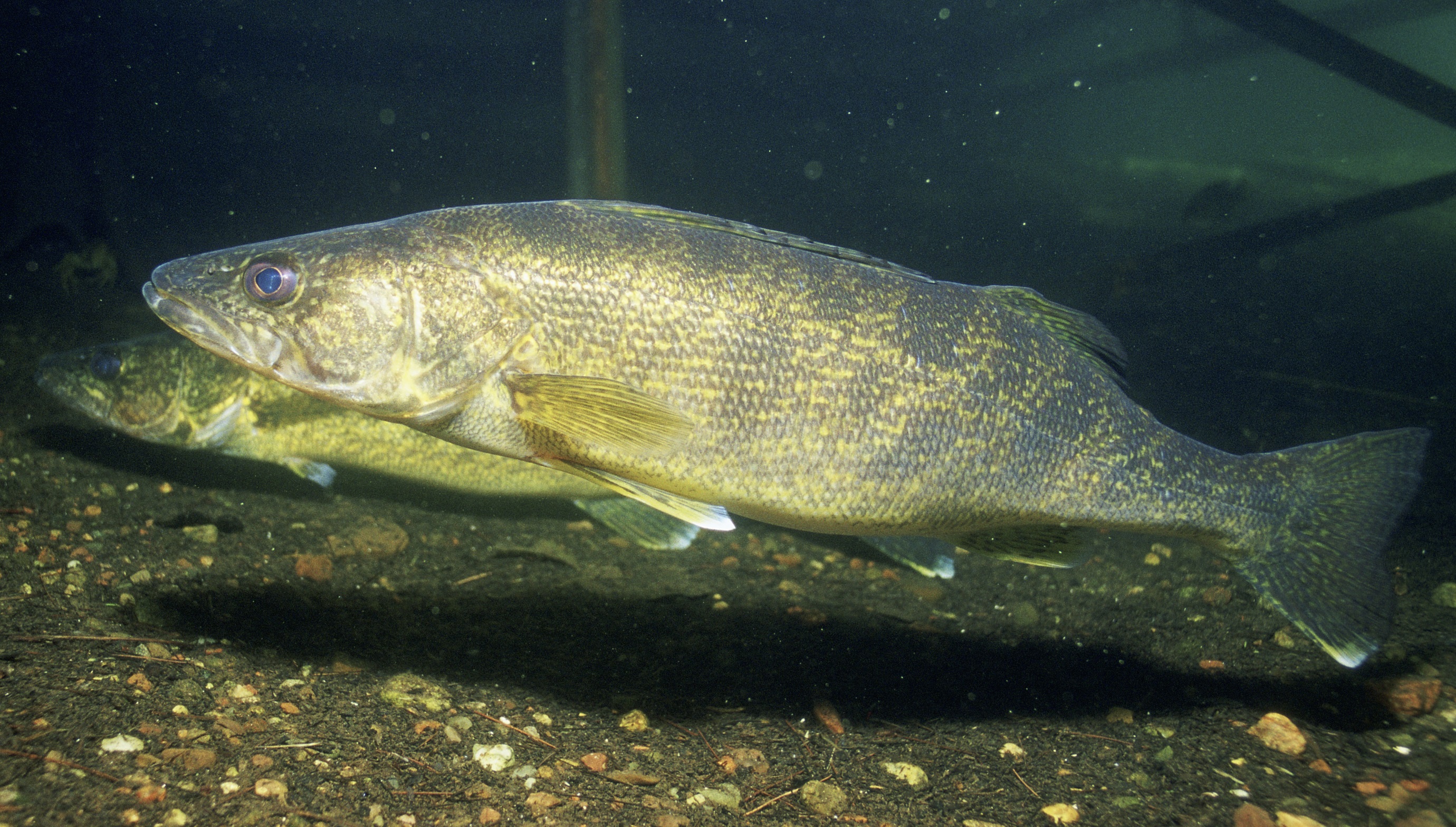
May 4, 2004, no location information
Photo by Eric Engbretson / U.S. Fish and Wildlife Service, Public Domain via Wikimedia Commons
About the walleye
- The easiest way to identify a walleye is by looking for the white spot at the tip of its tail fin. The walleye is the largest fish in the perch family and averages one to two pounds in weight.
- Walleyes live in lakes with sandy, gravelly, or rocky bottoms and water with moderate movement or turbidity.
- They can live up to twenty years and live longest in cooler water (65 to 70 °F, or 18 to 21 °C).
- The breeding, spawning, and hatching behaviors of walleye are highly dependent on water temperature. This means that success and survival rates for fry (recently hatched fish) varies greatly from year to year.
- The walleye is the state fish of Minnesota and is named for its reflective eyes.
- Fun fact: The largest walleye ever caught in Minnesota weighed seventeen pounds, eight ounces. It was caught in 1979.
Visual guide to phenology
Watch for walleyes' presence (or absence) and behaviors at different times of year.
Note to observers
This page explains general clues to watch and listen for when observing walleye phenology. However, this page does not explain how to identify this animal or collect data in a standardized way.
- For help with identification, see a field guide or the Minnesota DNR's webpages on common fishes of Minnesota.
- For guidance on collecting data, see Nature’s Notebook.
More resources
Keep exploring Season Watch
Keep exploring Season Watch
Co-author: Audrey Negro, Minnesota Master Naturalist
